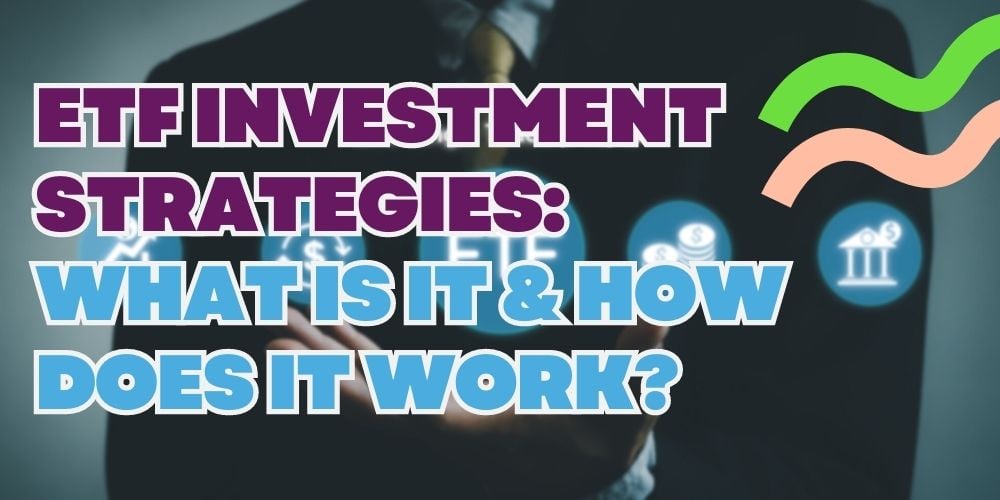Exchange-traded funds (ETFs) are bundled collections of securities that include almost every asset type in existence. They are traded directly on stock exchanges or through the best stock advisor services.
In this post, we’ll cover everything you need to know about ETF investment strategies. We will discuss why they’re good for your portfolio, how popular ETF investment strategies work, and the best ETFs to invest in this year.
Why ETF Investment Strategies Are Good for Your Portfolio
Seasoned investors use a range of ETF-trading strategies to identify the right ETFs for investment based on their individual goals. These strategies help them make calculated decisions about where to invest safely. Here are some of the elements that need to be taken into consideration:

Liquidity
Despite the diversification opportunities they present, ETFs trade like equities on the stock market. This means that there is no compromise on liquidity.
Like stocks, ETFs trade throughout market hours, thereby allowing investors to jump in and out of their investments any time they want.
Diversification
ETFs are an easy outlet for investors who want to diversify their portfolios. Through a broad range of international and regional ETFs, you can easily access niches and industries that might have been inaccessible through individual stocks.
One idea is to learn how to use The Motley Fool stock advisor to help narrow down the endless opportunities ETFs provide.
Cost Effectiveness
ETFs operate in a cost-friendly manner. Because there is only one transaction per trade, ETFs make it easier for investors to avoid the accumulation of commission fees. This helps them save money by managing fees effectively.
Simplicity
Stocks often come with complexities that make them difficult for investors to understand. ETFs break this barrier by offering a simple structure.
Transparency
ETFs are stress-free investments by nature because they generally disclose their holdings on a daily basis. Some semi-transparent ETFs reveal their complete portfolio holdings to investors monthly or quarterly.
Best ETF Investment Strategies and How They Work
Now that you know the benefits, you might be wondering how ETF strategies actually work in the real world. Here are some insights into three popular strategies:
Buy-and-Hold Investing
As the name suggests, buy-and-hold investment means buying securities and holding on to them for a period of ten years or longer. Due to their low costs and diverse options, ETFs are considered to be safe, long-term investments.

Usually, investments that have a lower expense ratio are profitable, long-term holdings. The best low-cost index funds for March 2023 were Vanguard Total Bond Market ETF (BND), SPDR S&P 500 ETF Trust (SPY), and iShares Core S&P Small-Cap ETF (IJR).
Dollar-Cost Averaging
Using dollar-cost averaging, investors are able to purchase ETFs at regular intervals, rather than making lump sum payments.
Not only does this make it easier for them to manage their costs, but it can also lower average costs over time, especially in a bear market when prices are falling. Therefore, dollar-cost averaging is a minimum-risk strategy.
Asset Allocation
Investors build the foundations of their portfolios using asset allocation, which is an investor’s chosen mix of investment assets, such as stocks, bonds, cash, and commodities. With multiple low-cost choices within all asset types, ETFs can be the building blocks of a diversified portfolio.
Best ETFs for Investment in 2023
With so many options to pick from, which ETF should you invest in? Here are three top choices for 2023:

Vanguard Total Stock Market ETF
With an unmatchable success rate, Vanguard ETF remains a popular choice among investors. It has an expense ratio of 0.03%, a dividend yield of 1.6%, and a five-year average annual return of 9.4%.
It tops the charts in terms of numbers. Moreover, With a vast range of holdings, it gives you exposure to market opportunities and value stocks.
Invesco IVZ S&P SmallCap Value with Momentum ETF
With a record-breaking five-year average annual return of 13.6%, this fund is a great option. It is a $739 million ETF that looks for value stocks whose share prices rise faster than its peers.
In the longer run, profits might drop due to rising inflation and interest rates. Therefore, if you are looking for decent short-term returns, VictoryShares USAA Core Short-Term Bond ETF can be a good choice. The 2.7% yield on this $454.5 million ETF is the highest among funds in this category.
In Summary
To sum up, ETFs provide investors with a flexible, diversified, and affordable option that gives them access to a variety of markets and asset classes. For more information about investments that might be good for you, check out our recent post on growth investing strategies.


 Tags:
Tags:










